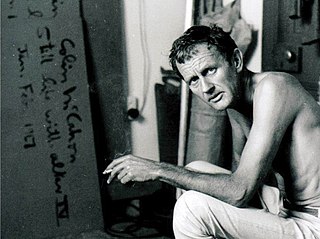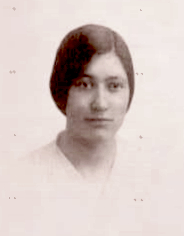Related Research Articles

Colin John McCahon was a prominent New Zealand artist whose work over 45 years consisted of various styles, including landscape, figuration, abstraction, and the overlay of painted text. Along with Toss Woollaston and Rita Angus, McCahon is credited with introducing modernism to New Zealand in the mid-20th century. He is regarded as New Zealand's most important modern artist, particularly in his landscape work.
George O'Brien (1821–1888) was an engineer of aristocratic background who turned to art in 19th century Australasia, dying in poverty but leaving a body of remarkable work.
Girolamo Pieri Pecci Ballati Nerli, was an Italian painter who worked and travelled in Australia and New Zealand in the late 19th century influencing Charles Conder and Frances Hodgkins and helping to move Australian and New Zealand art in new directions. His portrait of Robert Louis Stevenson in the Scottish National Portrait Gallery Edinburgh, is usually considered the most searching portrayal of the writer.

John Z. Robinson is a New Zealand painter, printmaker, and jeweller. He has lived in Dunedin, New Zealand since 1978.

Peter Malcolm William Entwisle was a New Zealand art historian and writer, notably on the history of Dunedin and of New Zealand art.

Doris More Lusk was a New Zealand painter, potter, art teacher, and university lecturer. In 1990 she was posthumously awarded the Governor General Art Award in recognition of her artistic career and contributions.
Grace Jane Joel was a New Zealand artist best known for her ability as a portraitist and figure painter.
Noeline Brokenshire was New Zealand sportswoman, who represented her country in field hockey, and as a hurdler at the 1950 British Empire Games. Later she was a gallery owner and noted woodturner, and the founder and publisher of New Zealand's first woodworking magazine, Touch Wood.

Fiona Dorothy Pardington is a New Zealand artist, her principal medium being photography.
Joanna Margaret Paul was a New Zealand visual artist, poet and film-maker.
Kathleen Lucy Salmond (1895–1946) was a New Zealand artist, born in Dunedin.
Marilynn Lois Webb was a New Zealand artist, noted for her contributions to Māori art and her work as an educator. She was best known for her work in printmaking and pastels, and her works are held in art collections in New Zealand, the United States, and Norway. She lectured at the Dunedin School of Art, and was made an emeritus principal lecturer in 2004.
Di ffrench was a New Zealand photographic and performance artist and sculptor. Her work is in the collection of Museum of New Zealand Te Papa Tongarewa, Auckland Art Gallery Toi o Tāmaki and the Hocken Collections in Dunedin.
Heather Straka is a New Zealand artist, based in Auckland, who primarily works with the media of painting and photography. Straka is well known as a painter that utilises a lot of detail. She often depicts cultures that are not her own, which has caused controversy at times. Her work engages with themes of economic and social upheaval in interwar China, the role of women in Arabic society and Māori in relation to colonisation in New Zealand. Eventually, the figure became important in Straka's practice and she began to use photographs as the starting point for some of her works and "Increasingly too the body feminine has become her milieu".
Lily Attey Daff was a British-born designer and artist who worked in New Zealand and published watercolour paintings and line drawings of many native New Zealand birds and flowers.

Barry Vickerman Cleavin is a New Zealand fine art printmaker.
David Con Hutton (1843–1910) was a New Zealand painter and teacher.

Neil Macalister Grant is a New Zealand potter.
Alan Pearson (1929–2019) was a neo-expressionist painter who lived in New Zealand and, in his later life, Australia.

Dorothy Catherine Wentworth Jenkin was a New Zealand watercolorist, botanical illustrator and printmaker. She was a founding member of the Invercargill Art Society and participated in campaigning for a public art gallery in Invercargill. She was involved in ensuring the acquisition of Anderson Park and the establishment of the Invercargill Art Gallery at that location. Many of her works are held at the Rakiura Museum and have been reproduced as prints and postcards.
References
- ↑ Obituary 1988.
- ↑ Obituary 1988.
- ↑ Obituary 1988.
- ↑ Tomlin 2016 , p. 103.
- ↑ Tomlin 2016 , p. 172.
- ↑ Obituary 1988.
- ↑ Obituary 1988.
- ↑ Obituary 1988.